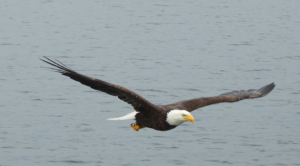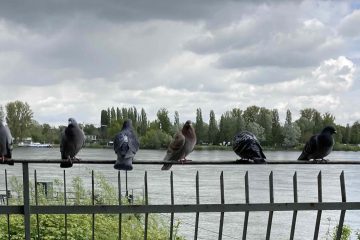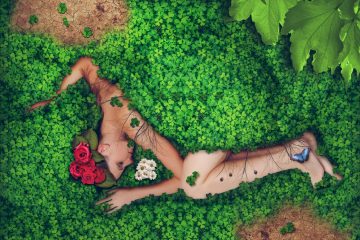Animal Tales: Narrating the Cultural and Personal
By Jay Johnston

Bald Eagle–Jay Johnston, copyright 2019
I’m thinking about stories. Those told by others, those I tell myself. This is part of my learning to think again after a frenetic, six-month period of “busy work”—the term a wonderful colleague gives to the all—encompassing but vacuous tasks (unceasing administration, meetings, report writing, form filling) that is part of a scholar’s work in the modern university.
As my tasks now change to fieldwork and meeting publication deadlines, my mental-physical temporality must also adapt: from the necessary swift, sharp combat blocks, and rebounds required to effectively manage “busy work” to the smoother, more expansive, slow figure skating moves needed for thinking, reading, and writing. As I nurse a slight tendency to clumsiness (or so I’m told!), the transition is challenging and requires that I become more conscious of the rote ways that I receive and send information. So, I try to consciously slow down and just watch my surroundings.
The chance to pause allows old and new narratives to mingle. A space for reflection has opened up, enabling me to think not only about the demands of the moment but to take stock and reconsider both what I am committed to and what I aspire towards. In this space, I meet different forms of knowing. I wonder at the different registers evoked by the slower pace and time to think differently about the personal, professional, spiritual, and their necessary admixture. Their close interrelation appears necessary and inherent in this more contemplative space. All the while, I’m becoming increasingly conscious that the animal world circles me. They are there in my daily experience of travel and fieldwork on animal-human cultures. They are there in the books I read, and I meet them in my personal landscape of feeling, experience, and imagining
Experientially: I watch bald eagles (Haliaeetus leucocephalus) circle or perch close by on Haida Gwaii (British Columbia). I’m overwhelmed by their numbers and close proximity. Of special significance to the island’s Haida nation, their stories of the Eagle are not mine to tell. Sensitive to the representation and appropriation of a culture not my own and cognizant that these tales may have particular ownership and contexts for telling, I let pass the urge to define what the eagles “mean” for the Haida, content to let them circle.
But I do try to pull close to their knowledge ways and delight in a guided walk by Gwaii Haanas park rangers on the GuuhlGa Siiwaay K’yuu, Spirit Lake Trail. The young female rangers expertly explain how the old-growth, temperate rainforest and its fauna were used by the Haida people and how they were changed by colonization. The Haida rangers identify natural and animal sources for medicine, for hardware to build homes, longhouses, canoes, for food and clothing. The guides also taught me a new acronym: CMT, Culturally Modified Tree, one used as a resource and so modified by the Haida people. I savored their very matter-of-fact presentation on good and bad energies and how these may remain associated with particular natural materials, wood for example. Even when used in building or canoes, these energies were understood to remain in the material and effect the community. This guided walk commenced with the rangers recounting a Haida myth about a sea-wolf located in the landscape where our small group was about to tread. I stepped out onto the collective stories of others.
Intellectually: I’m reading Laurie Sarkadi’s Voice in the Wild: A Memoir (2018), a memoir of her life mostly in Yellowknife, Canada’s Northwest Territories, and her relationships with specific animals. Each chapter that recounts a significant life episode is marked by encounters with a particular animal. As I have previously thought of organizing a university course in the same manner, I’m intrigued to follow her application of form, how she weaves the different types of information—factual, symbolic, personal—together under the “auspices” of one particular animal.
Sarkadi recounts the determined and repeated appearances of particular animal species at important life junctures and interprets the meaning these visitations have for her. For example, bears and motherhood, deer and spiritual development, dragonflies and a breast cancer scare. She also traces the dynamics of family life and her work as a journalist. She weaves together biological information about each species with traditional knowledge and animal “dictionaries,” which explain concepts and symbolic meaning from many cultures as they are associated with each animal. She visually signals these different discourses—those about animals and those about her own life—by a change in font. Sarkadi’s relation to these animals seems to oscillate between “embodying” an animal at specific times and reading the animals’ appearance as advice to follow its behavior patterns. I read this story and glimpse the role of animals as personal advisors and mediators in this particular life tale.
Reflectively: I think about the role of animal stories and encounters in my own life. It occurs to me that two of my favorite volumes saved from childhood are collections of animal stories. Spurred by Sarkadi, I consider what the role of animals would be in any telling of my own life tale.
Immediately, I meet grief. This is no surprise. I knew it was there waiting, previously anesthetized by the busy work (albeit bursting loose every now and then). Tomorrow marks a year since my beloved Lili Kamala died. Grief caused by the death of companion animals is often derided or minimalized, our relations with these furry or feathered beings seen as less valuable than human lives. I see this in the perplexed look in the faces of friends, silently wondering how I can be so affected by the loss of “just a cat.”
I’ve long been interested in feminist philosopher Kelly Oliver’s work. However, when I read Animal Lessons: How They Teach Us To Be Human (2009), I felt a closer affiliation to her (a scholar I have never met and know only through her published philosophy). Opening this volume is a poem of adoration that she penned about her deceased feline companion Kaos (the same breed as Lili). This was the writing of someone who also knew the profound reverberations of companion species loss.
Lili was my “little mate,” my intimate companion for over fourteen years. Our physical and energetic selves set into comforting patterns overtime: her nestling under my armpit in the early morning, my movements around the house dictated by her needs and whereabouts. Since she has gone, I’ve had to learn a new physical narrative, to differently embody my home space, to learn to write without her on my lap. Quite simply, her absence is everywhere sharp. I’ve yet to find the right vehicle, the right tale, to honor her. This short text is not it. But it’s a start. Awkwardly, I summon some strength to commence telling a narrative of fluffy love.
#
Jay Johnston is Associate Professor in the Department of Studies in Religion, University of Sydney. An interdisciplinary scholar her academic work is at the interface of philosophy/religion/arts. Among her current projects is an examination of New Nature writing as an ethico-spiritual practice; the longer-term effects of wildlife tourism on wellbeing, creativity and worldview; and the legacy of antiquarian thought on concepts of place, identity and nature in Cornwall and the Scottish Highlands. She has also been obsessed for many years with ‘alternative’ perception and its rendering in academic discourse.
Counterpoint blogs may be reprinted with the following acknowledgement: “This article was published by Counterpoint Navigating Knowledge on 24 July 2019.”
The views and opinions expressed on this website, in its publications, and in comments made in response to the site and publications are those of the author(s) and do not necessarily reflect the views and opinions of Counterpoint: Navigating Knowledge, its founders, its staff, or any agent or institution affiliated with it, nor those of the institution(s) with which the author is affiliated. Counterpoint exists to promote vigorous debate within and across knowledge systems and therefore publishes a wide variety of views and opinions in the interests of open conversation and dialogue.



